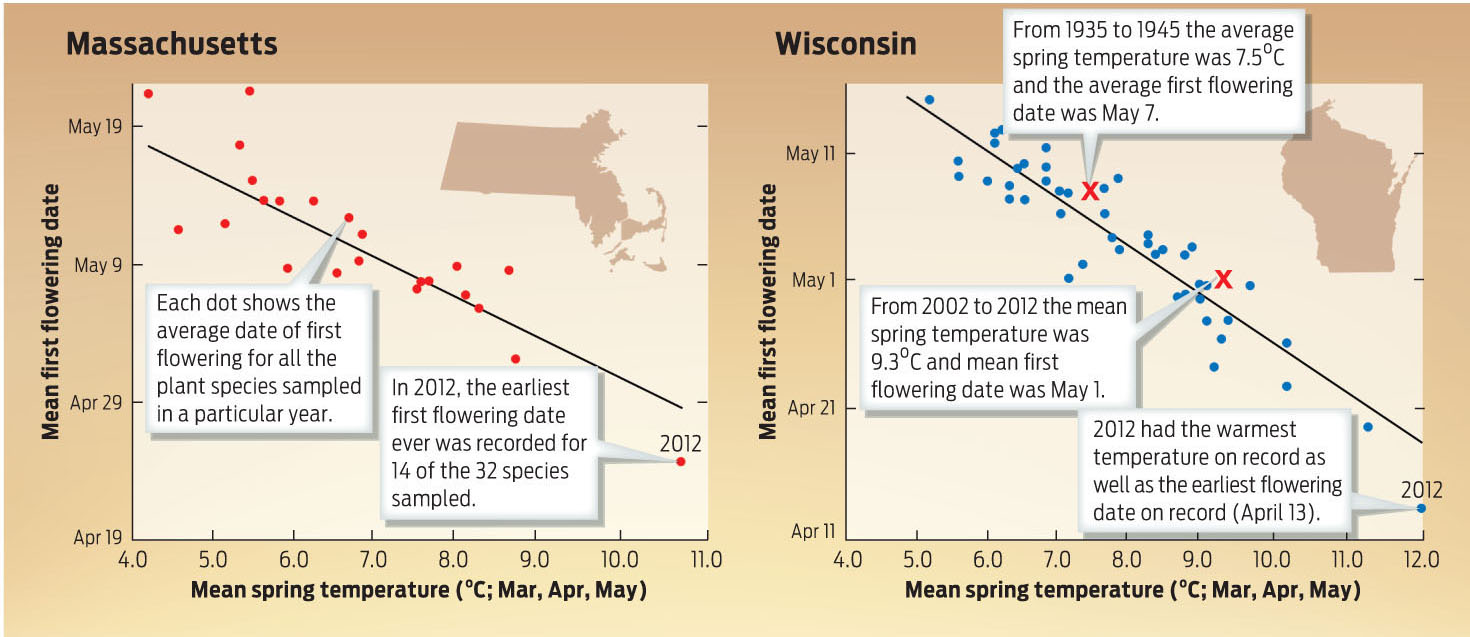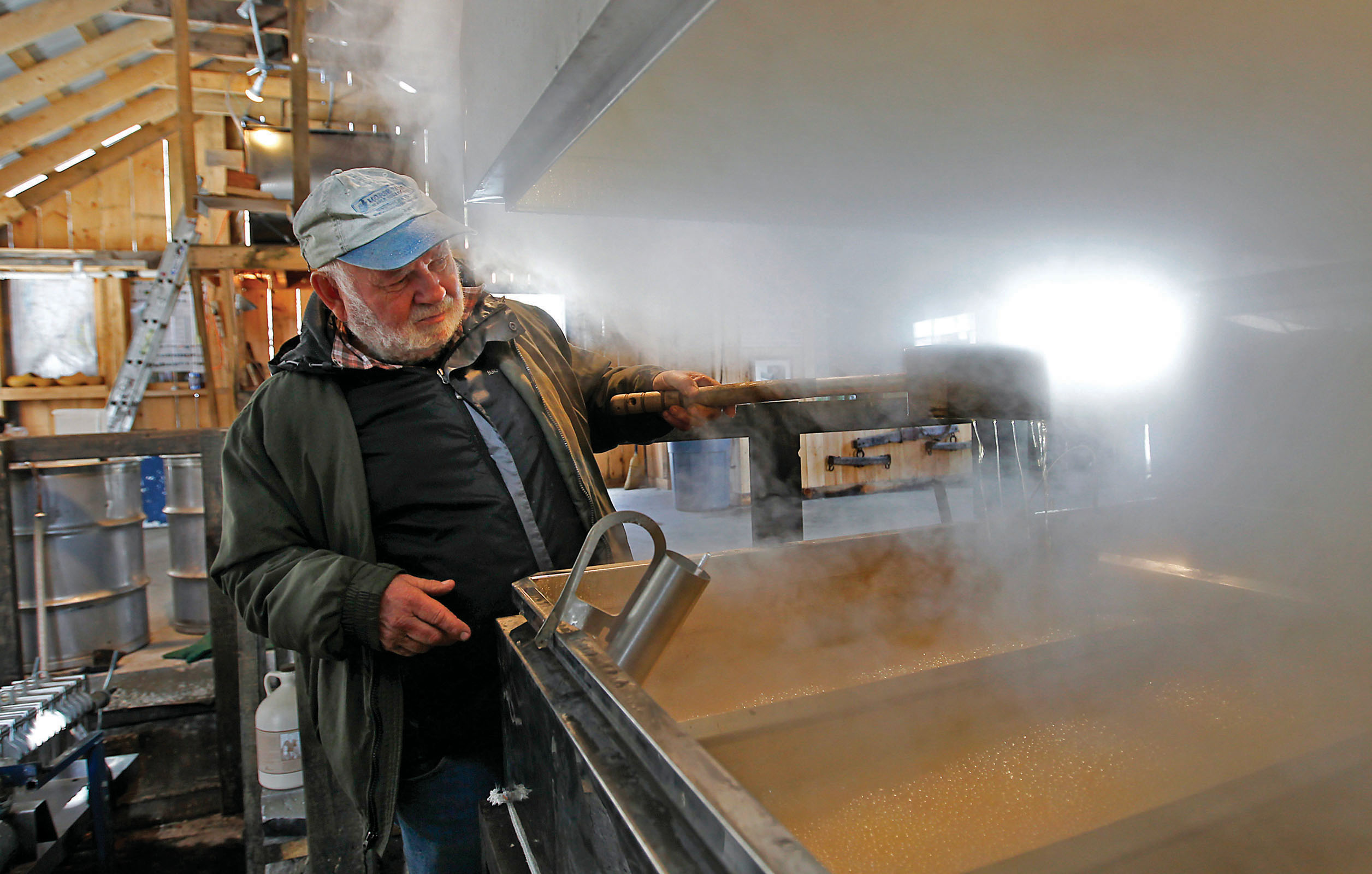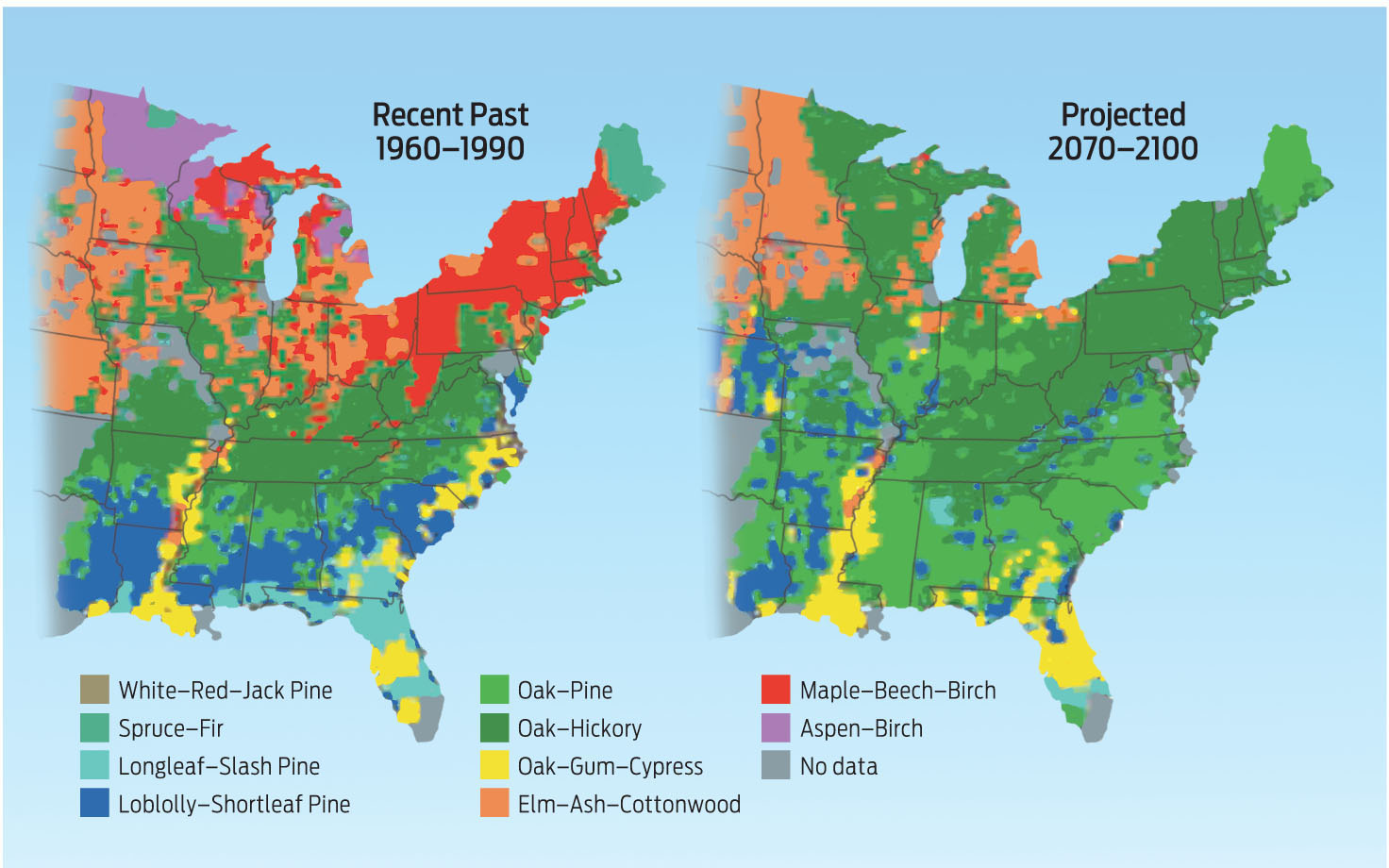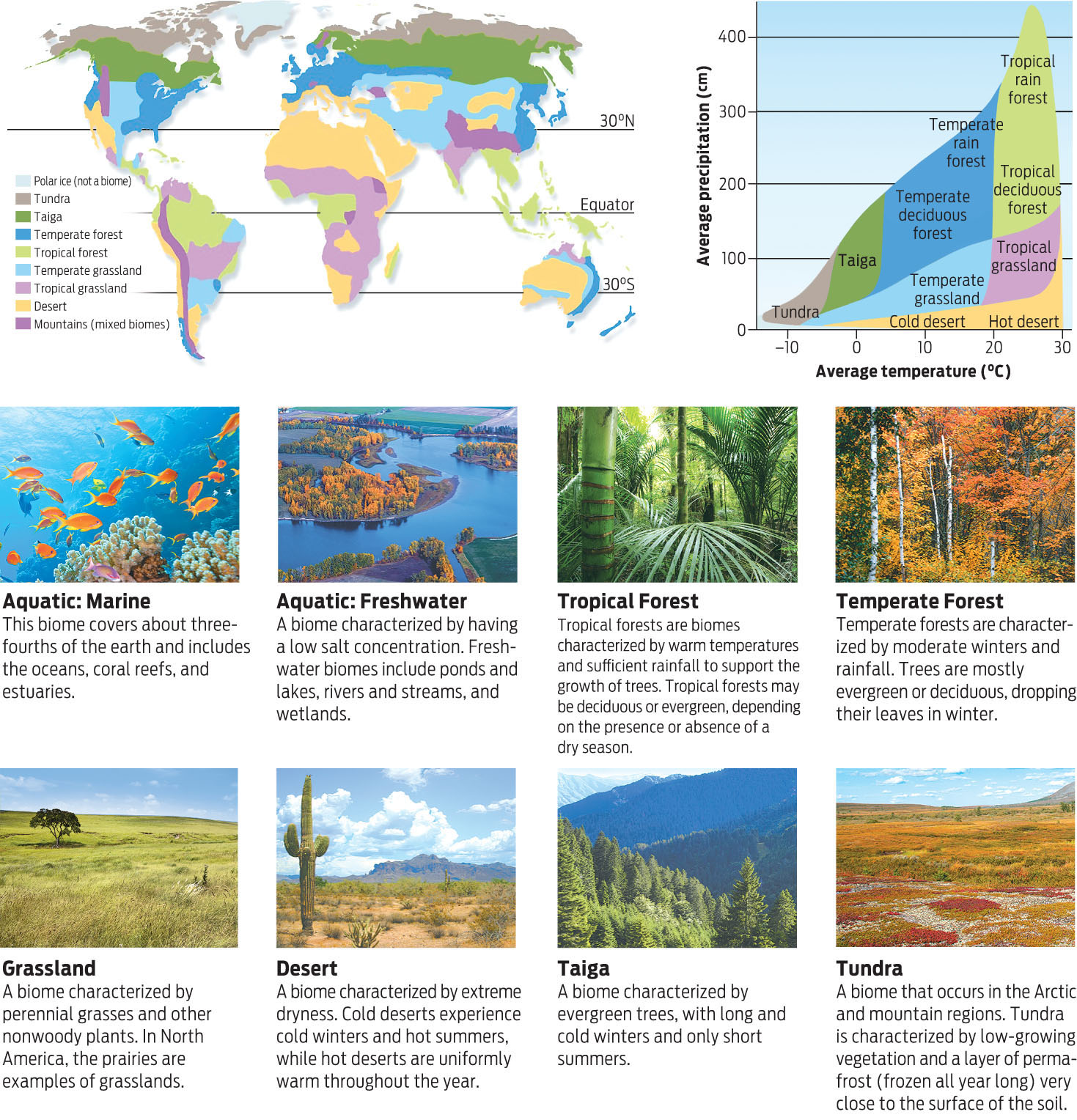TO EVERYTHING A SEASON
In nature, timing is everything. And for many species temperature is nature’s clock, cueing seasonally appropriate tasks like mating or producing flowers. Rising temperatures around the globe are interfering with these natural rhythms. Many plants are flowering earlier now than they once did; animals, such as the yellow-bellied marmot, are emerging from hibernation earlier; and many bird and butterfly species are migrating north and breeding earlier in the spring than they did a few decades ago—all because of slight changes in temperature cues. It’s a pattern of change that scientists are seeing around the globe (INFOGRAPHIC 23.2).
Global warming is changing the seasonal behavior of plants and animals. Increased average spring temperatures result in earlier flowering dates for a variety of plant species. For each 1°C rise in mean spring temperature, plants flower an average of 3.2 days earlier in Massachusetts and 4.1 days earlier in south-central Wisconsin.

490

ECOSYSTEM The living and nonliving components of an environment, including the communities of organisms present and the physical and chemical environment with which they interact.
Who cares if flowers bloom earlier or marmots come out of hibernation sooner? By themselves, these changes wouldn’t necessarily be a big deal. But because living things are exquisitely adapted to their environments, and are interdependent, a change in one part of an ecosystem may upset others. With longer summers, for example, marmots spend more time eating and less time hibernating. As a result, in addition to getting fat, the marmots are putting more pressure on the animals and plants they prey on, and therefore changing the wider ecosystem.
An ecosystem is a complex, interwoven network of interacting components. It includes both the community of living organisms present in an area and the features of the nonliving environment—physical conditions such as temperature, moisture, and the chemical resources found in soil, water, and air. Because the biotic and abiotic parts of an ecosystem can and do change, ecosystems are not static entities but dynamic systems. And because the parts of an ecosystem are so interconnected, a small change in one part of an ecosystem can have a domino effect.
No one knows this better than maple syrup farmers. “The flow of sap from maple trees during the spring season is controlled almost entirely by the daily fluctuation in temperature,” explains ecologist Perkins. “Small changes in the day-to-day temperature pattern will have large consequences on sap flow.”
Historically, trees were tapped in early March when the sap began to flow; the sap was then collected for the next 6 weeks. But about 10 years ago, Perkins started getting calls from syrup producers saying that they were tapping earlier and making syrup earlier. Curious, he and his colleagues decided to investigate. They scoured historical records and surveyed hundreds of maple syrup producers in New England and New York. Their results were startling: over a mere 40 years, between 1963 and 2003, the start of the tapping season had moved up by about 8 days. Even more significant, the end of the season, when maples begin to leaf out and the sap is no longer good for syrup, now comes 11 days earlier.
HABITAT The physical environment where an organism lives and to which it is adapted.
“Over that 40-year time period we’ve lost about 3 days of the season,” Perkins told Vermont Public Radio in 2009. “That doesn’t seem like a lot until you realize that the maple production season averages about 30 days in length. So we’ve lost about 10% of the season.”
To some extent, losses from a shortened tapping season have been offset by improved sap-removal technologies that make it possible to extract sap even under poor conditions. “[The shortened season] hasn’t yet impacted yields, because the technology of sap extraction has improved,” says Perkins, who points in particular to the use of vacuum tubes to suck out sap. The bigger problem is what will happen if the climate changes so much that New England no longer provides a suitable habitat for maple trees.
491
As Perkins testified in 2007, current climate computer models predict that by the end of the century New England’s forests will more closely resemble those of present-day Virginia, North Carolina, and Tennessee, dominated by hickory, oak, and pine rather than maple, beech, and birch. If that happens, not only maple syrup but the brilliant fall foliage New England is famous for will be a thing of the past (INFOGRAPHIC 23.3).
Computer simulation models that assume future increases in greenhouse gases predict major changes in forest makeup in the northeast United States over the next century. Predictions suggest that the currently dominant maple, beech, and birch forests will be replaced with hickory, oak, and pine forests.

BIOME A large geographic area defined by its characteristic plant life, which in turn is determined by temperature and levels of moisture.
New England’s colorful foliage is part of a distinct biome known as temperate deciduous forest. Biomes are large, geographically cohesive regions whose defining vegetation–its plant life—is determined principally by climatic factors like temperature and rainfall. The temperate deciduous forest biome is characterized by having distinct seasons, trees that lose their leaves in the fall, and a total annual precipitation of between 750 and 1,500 millimeters that occurs evenly throughout the year. The sugar maple is right at home in this biome (see UP CLOSE: BIOMES).
UP CLOSE: BIOMES

492
Climate change is beginning to redraw the map of biomes around the world. In northern Alaska, where once there was only sparsely vegetated tundra, woody shrubs now grow. When Montana’s Glacier National Park was opened in 1910, it held approximately 150 large glaciers; in 2013, there were only 25, and scientists predict that by 2030 there will be no glaciers left. As the vegetation in these landscapes changes, so does the community of organisms that rely on it for food and habitat.
493
The difference in average global temperatures between today and the last ice age—10,000 years ago—is only about 5°C (9°F).